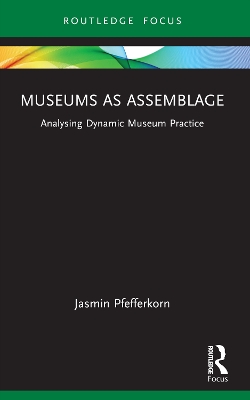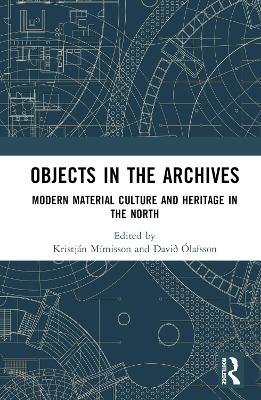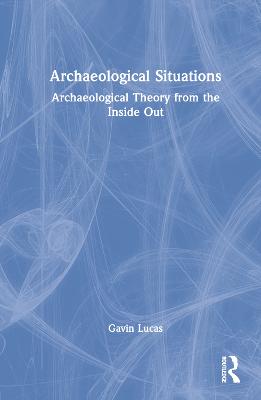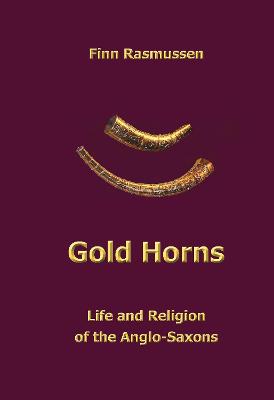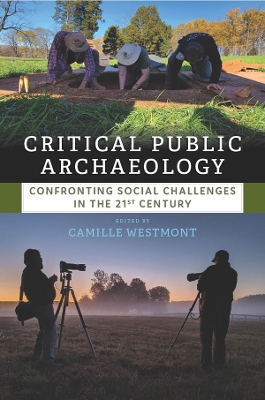Archaeological Investigation
 portes grátis
portes grátis
Archaeological Investigation
Hummler, Madeleine; Carver, Martin
Taylor & Francis Ltd
10/2024
552
Dura
9781032027838
Pré-lançamento - envio 15 a 20 dias após a sua edição
Descrição não disponível.
List of illustrations
Acknowledgements and picture credits
Preface
Preface to the second edition
The authors
PART 1: Principles
How archaeological fieldwork relates to theory and the society in which it is practised. The demands of research, the needs of conservation and the rights of stakeholders - and how these can be reconciled.
Chapter 1: The Stuff
A prodigious variety
How sites form
Digging them up
Let's speak archaeology
Mega-macro-micro-nano
In sum...
Briefing
Chapter 2: Approaches
What do we want from fieldwork?
Empirical to reflexive: four approaches
Value-led archaeology
Field Research Procedure
In sum...
Briefing
Chapter 3: Field Research Procedure - a framework
A value-led project: Sutton Hoo
The recent campaign
Stage 1 Reconnaissance
Stage 2 Evaluation
Stage 3 Project Design
Stage 4 Implementation
Stage 5 Analyses and syntheses
Stage 6 Publication and the public
The future
Reflections
Briefing
PART 2: In the Field
Here we review techniques and their applications for three principal types of field operation.
Chapter 4: Landscape Survey
First day in the field
Methods: Using maps, from the air, on the surface
Applications: Inventory surveys, mitigation surveys, research surveys, environments (historic and natural), survey by samples
In sum...
Briefing
Chapter 5: Site Survey
Definitions
Methods: In the archives, from the air, on the ground (topography and surface collection), geophysical mapping, georadar, geochemical methods, strata testing (cores pits and trenches)
Applications: In the countryside, a basket of site surveys in Sicily, urban sites, graveyards, battlefields and gardens, studying standing buildings
In sum....
Briefing
Chapter 6: Excavation
First day on a dig
On method: three ways of dissecting strata, contexts, features and structures, the excavation site as a laboratory
On procedure: Recovery levels A-E
Recovering the unseen: Recovery level F (taking away, nano investigations)
Recording: Rationales of recording, recording in action, components of records (contexts, features, structures, horizons, sections and profiles), finds, notebooks and videos, an integrated recording system
The course of an excavation
In sum...
Briefing
PART 3: WRITING UP
This section shows how the records gathered in the field are studied and reported to researchers, to clients and to the public.
Chapter 7: Analysis
Preliminary tasks: inventory, assessment and design
The analytical programme: assemblage, space, chronology
Designing the analytical itinerary
An example
In sum...
Briefing
Chapter 8: Assemblage
Retrieval
Programmes of Analysis
Artefacts: fabric, form, style
Ecodata: bioarchaeological material: Human remains: SI, aDNA; Animals; Plants and plant-related remains; Organic Residues and Proteomics; Soils
Interpretation of archaeological assemblages: in settlements and cemeteries
In sum...
Briefing
Chapter 9: Space
Scales of space
Spatial patterns from excavation: mapping objects, contexts, features and structures; finding patterns in burial; finding buildings; Inside buildings
Spatial patterns from site survey: mapping settlements
Spatial patterns in the landscape
In sum....
Briefing
Chapter 10: Chronology
The business of chronology
Typological dating of artefacts
Direct dating of objects
Direct dating of contexts
Relative ordering of contexts
Using objects to date contexts
Ordering assemblages
Using stratification, assemblage and radiocarbon together
Feature sequences
Chronology of sites: dating buildings; rural sites; urban sites
Context seriation: assemblages and stratification working together
Convergent chronologies
In sum.....
Briefing
Chapter 11: Synthesis
Why write?
The case for synthesis
Site models
Towards synthesis
Ethnography
Experiment: artefacts; a building; a ship
The validation of syntheses
Joined-up synthesis: science and humanities in tandem
In sum...
Chapter 12: Publication
Eight ways of telling it: who pays and why?
Archives and Field Records
Field Reports
Client Reports
Reporting research: preparing a research report
Books for the wider public (including students)
Presenting sites to the public
Museums and websites
Ephemeral output: the press, TV, social media
Archaeologists communicate.
The Future of Publication
Briefing
PART 4 Design
This part studies project design as the principal driver of archaeological investigations and how the concept has created a vivid and varied repertoire of career opportunities.
Chapter 13: Challenges
Extensive investigations - The Ruby Pipeline Nevada, Olympic Dam South Australia, Loango coast Congo, Green Sahara, Canadian ice patches and calibou.
Intensive investigations- Digging deep - Paleolithic Urals, Klithi cave. Digging mounds- Carlston Annis mound, Wijnaldum-Tjitsma terp. On the flat - Yeavering, Bylany. Underneath towns - York Minster, Managing Urban Archaeology (Ove Arup), Crossrail, Grand Arcade in Cambridge.
Underwater investigations- wrecks: Yassiada. Drowned settlements: Charavines, Atlit Yam, Splashcos.
An integrated challenge: - the underground carpark of the Zurich Opera house.
Reflections
Briefing
Chapter 14: Designing Projects
Introduction - a rationale for design
Field Research Procedure and its Design Stages
Evaluation in town and country
The research agenda
Predicting the archaeology
The Social context
Contents of a Project Design
Submission and assessment
Reflections
Briefing
Chapter 15: Our profession and its future
The basis for a profession
Deregulated archaeology: values, responsibilities, rewards
The Research Cycle
The Heritage Cycle
Professional prospects - the way in
A global agenda? - the SDGs
The Creative Spirit
Briefing
References
Index
Acknowledgements and picture credits
Preface
Preface to the second edition
The authors
PART 1: Principles
How archaeological fieldwork relates to theory and the society in which it is practised. The demands of research, the needs of conservation and the rights of stakeholders - and how these can be reconciled.
Chapter 1: The Stuff
A prodigious variety
How sites form
Digging them up
Let's speak archaeology
Mega-macro-micro-nano
In sum...
Briefing
Chapter 2: Approaches
What do we want from fieldwork?
Empirical to reflexive: four approaches
Value-led archaeology
Field Research Procedure
In sum...
Briefing
Chapter 3: Field Research Procedure - a framework
A value-led project: Sutton Hoo
The recent campaign
Stage 1 Reconnaissance
Stage 2 Evaluation
Stage 3 Project Design
Stage 4 Implementation
Stage 5 Analyses and syntheses
Stage 6 Publication and the public
The future
Reflections
Briefing
PART 2: In the Field
Here we review techniques and their applications for three principal types of field operation.
Chapter 4: Landscape Survey
First day in the field
Methods: Using maps, from the air, on the surface
Applications: Inventory surveys, mitigation surveys, research surveys, environments (historic and natural), survey by samples
In sum...
Briefing
Chapter 5: Site Survey
Definitions
Methods: In the archives, from the air, on the ground (topography and surface collection), geophysical mapping, georadar, geochemical methods, strata testing (cores pits and trenches)
Applications: In the countryside, a basket of site surveys in Sicily, urban sites, graveyards, battlefields and gardens, studying standing buildings
In sum....
Briefing
Chapter 6: Excavation
First day on a dig
On method: three ways of dissecting strata, contexts, features and structures, the excavation site as a laboratory
On procedure: Recovery levels A-E
Recovering the unseen: Recovery level F (taking away, nano investigations)
Recording: Rationales of recording, recording in action, components of records (contexts, features, structures, horizons, sections and profiles), finds, notebooks and videos, an integrated recording system
The course of an excavation
In sum...
Briefing
PART 3: WRITING UP
This section shows how the records gathered in the field are studied and reported to researchers, to clients and to the public.
Chapter 7: Analysis
Preliminary tasks: inventory, assessment and design
The analytical programme: assemblage, space, chronology
Designing the analytical itinerary
An example
In sum...
Briefing
Chapter 8: Assemblage
Retrieval
Programmes of Analysis
Artefacts: fabric, form, style
Ecodata: bioarchaeological material: Human remains: SI, aDNA; Animals; Plants and plant-related remains; Organic Residues and Proteomics; Soils
Interpretation of archaeological assemblages: in settlements and cemeteries
In sum...
Briefing
Chapter 9: Space
Scales of space
Spatial patterns from excavation: mapping objects, contexts, features and structures; finding patterns in burial; finding buildings; Inside buildings
Spatial patterns from site survey: mapping settlements
Spatial patterns in the landscape
In sum....
Briefing
Chapter 10: Chronology
The business of chronology
Typological dating of artefacts
Direct dating of objects
Direct dating of contexts
Relative ordering of contexts
Using objects to date contexts
Ordering assemblages
Using stratification, assemblage and radiocarbon together
Feature sequences
Chronology of sites: dating buildings; rural sites; urban sites
Context seriation: assemblages and stratification working together
Convergent chronologies
In sum.....
Briefing
Chapter 11: Synthesis
Why write?
The case for synthesis
Site models
Towards synthesis
Ethnography
Experiment: artefacts; a building; a ship
The validation of syntheses
Joined-up synthesis: science and humanities in tandem
In sum...
Chapter 12: Publication
Eight ways of telling it: who pays and why?
Archives and Field Records
Field Reports
Client Reports
Reporting research: preparing a research report
Books for the wider public (including students)
Presenting sites to the public
Museums and websites
Ephemeral output: the press, TV, social media
Archaeologists communicate.
The Future of Publication
Briefing
PART 4 Design
This part studies project design as the principal driver of archaeological investigations and how the concept has created a vivid and varied repertoire of career opportunities.
Chapter 13: Challenges
Extensive investigations - The Ruby Pipeline Nevada, Olympic Dam South Australia, Loango coast Congo, Green Sahara, Canadian ice patches and calibou.
Intensive investigations- Digging deep - Paleolithic Urals, Klithi cave. Digging mounds- Carlston Annis mound, Wijnaldum-Tjitsma terp. On the flat - Yeavering, Bylany. Underneath towns - York Minster, Managing Urban Archaeology (Ove Arup), Crossrail, Grand Arcade in Cambridge.
Underwater investigations- wrecks: Yassiada. Drowned settlements: Charavines, Atlit Yam, Splashcos.
An integrated challenge: - the underground carpark of the Zurich Opera house.
Reflections
Briefing
Chapter 14: Designing Projects
Introduction - a rationale for design
Field Research Procedure and its Design Stages
Evaluation in town and country
The research agenda
Predicting the archaeology
The Social context
Contents of a Project Design
Submission and assessment
Reflections
Briefing
Chapter 15: Our profession and its future
The basis for a profession
Deregulated archaeology: values, responsibilities, rewards
The Research Cycle
The Heritage Cycle
Professional prospects - the way in
A global agenda? - the SDGs
The Creative Spirit
Briefing
References
Index
Este título pertence ao(s) assunto(s) indicados(s). Para ver outros títulos clique no assunto desejado.
sutton;hoo;sequence;diagram;field;archaeology;carver;2007a;site;model
List of illustrations
Acknowledgements and picture credits
Preface
Preface to the second edition
The authors
PART 1: Principles
How archaeological fieldwork relates to theory and the society in which it is practised. The demands of research, the needs of conservation and the rights of stakeholders - and how these can be reconciled.
Chapter 1: The Stuff
A prodigious variety
How sites form
Digging them up
Let's speak archaeology
Mega-macro-micro-nano
In sum...
Briefing
Chapter 2: Approaches
What do we want from fieldwork?
Empirical to reflexive: four approaches
Value-led archaeology
Field Research Procedure
In sum...
Briefing
Chapter 3: Field Research Procedure - a framework
A value-led project: Sutton Hoo
The recent campaign
Stage 1 Reconnaissance
Stage 2 Evaluation
Stage 3 Project Design
Stage 4 Implementation
Stage 5 Analyses and syntheses
Stage 6 Publication and the public
The future
Reflections
Briefing
PART 2: In the Field
Here we review techniques and their applications for three principal types of field operation.
Chapter 4: Landscape Survey
First day in the field
Methods: Using maps, from the air, on the surface
Applications: Inventory surveys, mitigation surveys, research surveys, environments (historic and natural), survey by samples
In sum...
Briefing
Chapter 5: Site Survey
Definitions
Methods: In the archives, from the air, on the ground (topography and surface collection), geophysical mapping, georadar, geochemical methods, strata testing (cores pits and trenches)
Applications: In the countryside, a basket of site surveys in Sicily, urban sites, graveyards, battlefields and gardens, studying standing buildings
In sum....
Briefing
Chapter 6: Excavation
First day on a dig
On method: three ways of dissecting strata, contexts, features and structures, the excavation site as a laboratory
On procedure: Recovery levels A-E
Recovering the unseen: Recovery level F (taking away, nano investigations)
Recording: Rationales of recording, recording in action, components of records (contexts, features, structures, horizons, sections and profiles), finds, notebooks and videos, an integrated recording system
The course of an excavation
In sum...
Briefing
PART 3: WRITING UP
This section shows how the records gathered in the field are studied and reported to researchers, to clients and to the public.
Chapter 7: Analysis
Preliminary tasks: inventory, assessment and design
The analytical programme: assemblage, space, chronology
Designing the analytical itinerary
An example
In sum...
Briefing
Chapter 8: Assemblage
Retrieval
Programmes of Analysis
Artefacts: fabric, form, style
Ecodata: bioarchaeological material: Human remains: SI, aDNA; Animals; Plants and plant-related remains; Organic Residues and Proteomics; Soils
Interpretation of archaeological assemblages: in settlements and cemeteries
In sum...
Briefing
Chapter 9: Space
Scales of space
Spatial patterns from excavation: mapping objects, contexts, features and structures; finding patterns in burial; finding buildings; Inside buildings
Spatial patterns from site survey: mapping settlements
Spatial patterns in the landscape
In sum....
Briefing
Chapter 10: Chronology
The business of chronology
Typological dating of artefacts
Direct dating of objects
Direct dating of contexts
Relative ordering of contexts
Using objects to date contexts
Ordering assemblages
Using stratification, assemblage and radiocarbon together
Feature sequences
Chronology of sites: dating buildings; rural sites; urban sites
Context seriation: assemblages and stratification working together
Convergent chronologies
In sum.....
Briefing
Chapter 11: Synthesis
Why write?
The case for synthesis
Site models
Towards synthesis
Ethnography
Experiment: artefacts; a building; a ship
The validation of syntheses
Joined-up synthesis: science and humanities in tandem
In sum...
Chapter 12: Publication
Eight ways of telling it: who pays and why?
Archives and Field Records
Field Reports
Client Reports
Reporting research: preparing a research report
Books for the wider public (including students)
Presenting sites to the public
Museums and websites
Ephemeral output: the press, TV, social media
Archaeologists communicate.
The Future of Publication
Briefing
PART 4 Design
This part studies project design as the principal driver of archaeological investigations and how the concept has created a vivid and varied repertoire of career opportunities.
Chapter 13: Challenges
Extensive investigations - The Ruby Pipeline Nevada, Olympic Dam South Australia, Loango coast Congo, Green Sahara, Canadian ice patches and calibou.
Intensive investigations- Digging deep - Paleolithic Urals, Klithi cave. Digging mounds- Carlston Annis mound, Wijnaldum-Tjitsma terp. On the flat - Yeavering, Bylany. Underneath towns - York Minster, Managing Urban Archaeology (Ove Arup), Crossrail, Grand Arcade in Cambridge.
Underwater investigations- wrecks: Yassiada. Drowned settlements: Charavines, Atlit Yam, Splashcos.
An integrated challenge: - the underground carpark of the Zurich Opera house.
Reflections
Briefing
Chapter 14: Designing Projects
Introduction - a rationale for design
Field Research Procedure and its Design Stages
Evaluation in town and country
The research agenda
Predicting the archaeology
The Social context
Contents of a Project Design
Submission and assessment
Reflections
Briefing
Chapter 15: Our profession and its future
The basis for a profession
Deregulated archaeology: values, responsibilities, rewards
The Research Cycle
The Heritage Cycle
Professional prospects - the way in
A global agenda? - the SDGs
The Creative Spirit
Briefing
References
Index
Acknowledgements and picture credits
Preface
Preface to the second edition
The authors
PART 1: Principles
How archaeological fieldwork relates to theory and the society in which it is practised. The demands of research, the needs of conservation and the rights of stakeholders - and how these can be reconciled.
Chapter 1: The Stuff
A prodigious variety
How sites form
Digging them up
Let's speak archaeology
Mega-macro-micro-nano
In sum...
Briefing
Chapter 2: Approaches
What do we want from fieldwork?
Empirical to reflexive: four approaches
Value-led archaeology
Field Research Procedure
In sum...
Briefing
Chapter 3: Field Research Procedure - a framework
A value-led project: Sutton Hoo
The recent campaign
Stage 1 Reconnaissance
Stage 2 Evaluation
Stage 3 Project Design
Stage 4 Implementation
Stage 5 Analyses and syntheses
Stage 6 Publication and the public
The future
Reflections
Briefing
PART 2: In the Field
Here we review techniques and their applications for three principal types of field operation.
Chapter 4: Landscape Survey
First day in the field
Methods: Using maps, from the air, on the surface
Applications: Inventory surveys, mitigation surveys, research surveys, environments (historic and natural), survey by samples
In sum...
Briefing
Chapter 5: Site Survey
Definitions
Methods: In the archives, from the air, on the ground (topography and surface collection), geophysical mapping, georadar, geochemical methods, strata testing (cores pits and trenches)
Applications: In the countryside, a basket of site surveys in Sicily, urban sites, graveyards, battlefields and gardens, studying standing buildings
In sum....
Briefing
Chapter 6: Excavation
First day on a dig
On method: three ways of dissecting strata, contexts, features and structures, the excavation site as a laboratory
On procedure: Recovery levels A-E
Recovering the unseen: Recovery level F (taking away, nano investigations)
Recording: Rationales of recording, recording in action, components of records (contexts, features, structures, horizons, sections and profiles), finds, notebooks and videos, an integrated recording system
The course of an excavation
In sum...
Briefing
PART 3: WRITING UP
This section shows how the records gathered in the field are studied and reported to researchers, to clients and to the public.
Chapter 7: Analysis
Preliminary tasks: inventory, assessment and design
The analytical programme: assemblage, space, chronology
Designing the analytical itinerary
An example
In sum...
Briefing
Chapter 8: Assemblage
Retrieval
Programmes of Analysis
Artefacts: fabric, form, style
Ecodata: bioarchaeological material: Human remains: SI, aDNA; Animals; Plants and plant-related remains; Organic Residues and Proteomics; Soils
Interpretation of archaeological assemblages: in settlements and cemeteries
In sum...
Briefing
Chapter 9: Space
Scales of space
Spatial patterns from excavation: mapping objects, contexts, features and structures; finding patterns in burial; finding buildings; Inside buildings
Spatial patterns from site survey: mapping settlements
Spatial patterns in the landscape
In sum....
Briefing
Chapter 10: Chronology
The business of chronology
Typological dating of artefacts
Direct dating of objects
Direct dating of contexts
Relative ordering of contexts
Using objects to date contexts
Ordering assemblages
Using stratification, assemblage and radiocarbon together
Feature sequences
Chronology of sites: dating buildings; rural sites; urban sites
Context seriation: assemblages and stratification working together
Convergent chronologies
In sum.....
Briefing
Chapter 11: Synthesis
Why write?
The case for synthesis
Site models
Towards synthesis
Ethnography
Experiment: artefacts; a building; a ship
The validation of syntheses
Joined-up synthesis: science and humanities in tandem
In sum...
Chapter 12: Publication
Eight ways of telling it: who pays and why?
Archives and Field Records
Field Reports
Client Reports
Reporting research: preparing a research report
Books for the wider public (including students)
Presenting sites to the public
Museums and websites
Ephemeral output: the press, TV, social media
Archaeologists communicate.
The Future of Publication
Briefing
PART 4 Design
This part studies project design as the principal driver of archaeological investigations and how the concept has created a vivid and varied repertoire of career opportunities.
Chapter 13: Challenges
Extensive investigations - The Ruby Pipeline Nevada, Olympic Dam South Australia, Loango coast Congo, Green Sahara, Canadian ice patches and calibou.
Intensive investigations- Digging deep - Paleolithic Urals, Klithi cave. Digging mounds- Carlston Annis mound, Wijnaldum-Tjitsma terp. On the flat - Yeavering, Bylany. Underneath towns - York Minster, Managing Urban Archaeology (Ove Arup), Crossrail, Grand Arcade in Cambridge.
Underwater investigations- wrecks: Yassiada. Drowned settlements: Charavines, Atlit Yam, Splashcos.
An integrated challenge: - the underground carpark of the Zurich Opera house.
Reflections
Briefing
Chapter 14: Designing Projects
Introduction - a rationale for design
Field Research Procedure and its Design Stages
Evaluation in town and country
The research agenda
Predicting the archaeology
The Social context
Contents of a Project Design
Submission and assessment
Reflections
Briefing
Chapter 15: Our profession and its future
The basis for a profession
Deregulated archaeology: values, responsibilities, rewards
The Research Cycle
The Heritage Cycle
Professional prospects - the way in
A global agenda? - the SDGs
The Creative Spirit
Briefing
References
Index
Este título pertence ao(s) assunto(s) indicados(s). Para ver outros títulos clique no assunto desejado.

